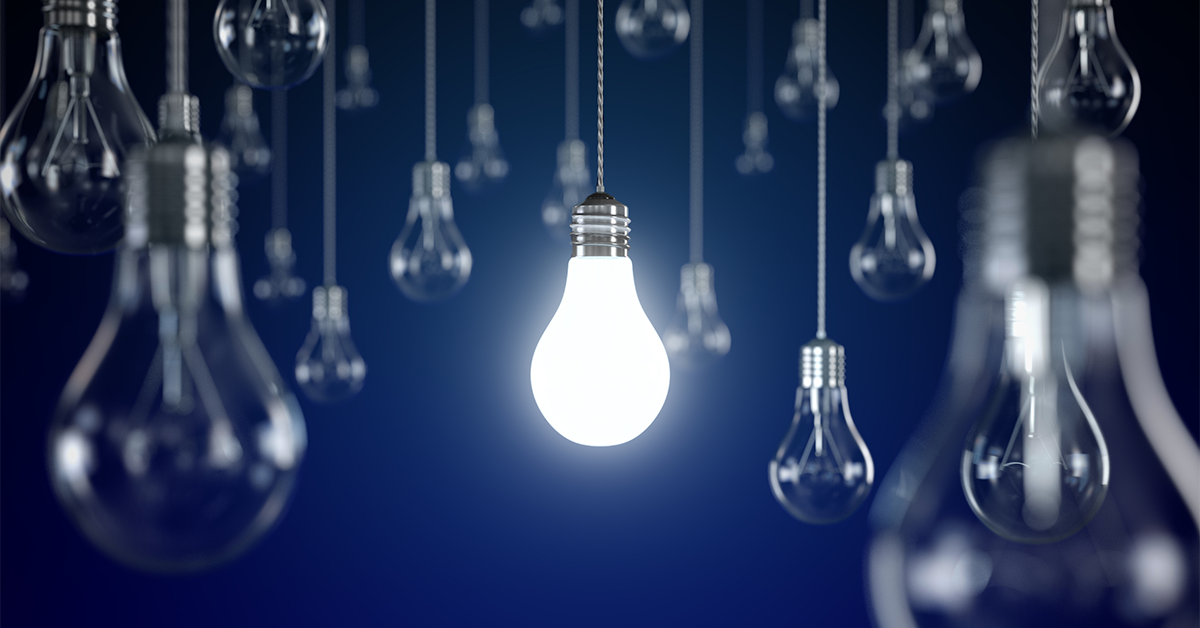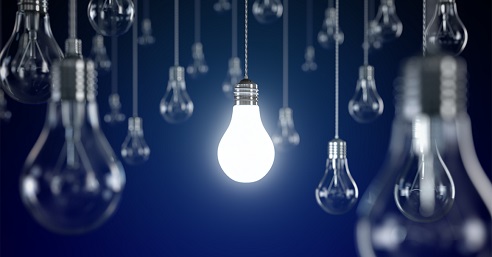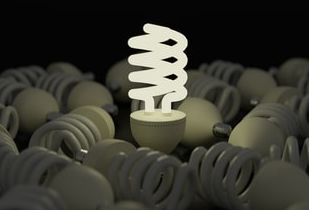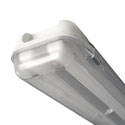When we think of a light bulb, we used to refer to an incandescent or tungsten filament lamp with a round sphere at one end or a candle lamp that is long and thin. Nowadays we talk more about LEDs, since LED bulbs are more energy efficient, cheaper to run and better for the environment. Most light bulbs have round metal caps with either a screw or bayonet type fitting
At Lyco, we sell a wide range of traditional light bulbs as well as more specialist types, and we understand that knowing which type you need is not as simple as it once was. With this in mind, we have put together a quick guide to fitting types, and traditional light bulbs.

Standard Fittings & Effects
The types of lamp available with screw and bayonet caps have broadened greatly in recent years, and now include LED bulbs. With traditional cap fixtures, you get great flexibility and a wide choice of lighting effects.
Domestic Bulbs
In the UK, bayonet and screw caps are the most commonly used type of light bulb. When it comes to which type is better, there isn’t a huge amount of benefit in opting for one or the other – the only exception is that bayonets are less likely to work loose from their fixture unintentionally, and there are no threads to be accidentally stripped or removed.
Bayonet Bulbs
There are two different types of bayonet cap – standard and small. Standard bayonet is by far the most popular and is perhaps the most common light bulb of all in the UK.
The bayonet cap type fitting (BC) is perhaps the most well-known lamp fitting in the UK today. Invented towards the end of the nineteenth century and utilising a mechanism originally developed for bayonet rifles, the BC consists of a spring and two contacts with bayonet mounts on either side.
To fit a bayonet light bulb, simply depress the lamp into its holder, twist under the lugs and the bayonet mounts are retained by the springs, thus ensuring optimum contact. It is a simple push and twist motion that most of us are familiar with.
Size Variations
The most common sizes of bayonet cap fittings are BC or B22d, (where 22 refers to the diameter, in mm of the lamp base) and small bayonet cap – SBC (or B15d). For insulation and safety purposes, these types of fitting typically feature a plastic or metal skirt.
Common Uses
It is most common to find bayonet fittings in pendant lights, batten holders, wall and ceiling lights designed for domestic use. BC fittings can be enclosed in some very decorative luminaires and traditionally incandescent tungsten filament lamps are used. Nowadays, there are also low energy lamps with bayonet caps, which mean you can keep your existing fittings and reduce damage to the environment at the same time.
GU10 bulbs
This type of bulb has a twist and lock mechanism, and so tend to be classified as a type of bayonet bulb. G means that the bulb has a bi-pin, or double pin base, and the pins are 10mm apart, and protrude 7mm from the base of the bulb. GU10 bulbs tend to be found in spotlights, kitchens and bathrooms, directional downlights and recessed lighting.
Screw Cap Bulbs
Screw caps are available in four common sizes – Micro (MES), Small (SES), Standard (ES) and Goliath or Giant (GES).
Another very popular fitting type for domestic lighting purposes is the screw cap – invented by Thomas Edison in 1909 and trademarked under Mazda.
Using the metal screw as one contact and a single base as the other, the lamp simply screws into the fitting. Contact is made when the lamp screw is almost home, thus making the screw part both the physical and electrical contact that makes the circuit.
Screw Cap Reliability
The screw fitting is considered by some as easier to maintain, particularly as there are no springs involved which can fail over time. However, there is a small drawback in that it is possible to cross-thread, which can be a problem when the bulb needs to be replaced, or there may not be a secure flow of electricity.
Size Variations
The most common type of screw cap in the UK is the ES or Edison Screw E27, (where the number relates to the diameter of the screw). This size of screw cap bulb tends to be the one that is found in standard light fixtures in homes.
There are other, smaller sized screw light bulbs, such as SES or Small Edison Screw (E14), Giant or Goliath Edison Screw GES (E40) and MES or Miniature or Micro Edison Screw (E10). These tend to be used in decorative lighting where the bulb is exposed, and so needs to be smaller for aesthetic reasons.
To find your ideal bulb by shape or cap try our Light Bulb Finder
Although the Edison Screw is the most popular choice for domestic fittings, there are now many more Small Edison Screw lamps available. This is because retailers are sourcing light fittings from Europe and the US, where this type of fitting is far more common.
Giant Edison Screw fittings are generally not suitable for domestic use and more suited to specialist street lamps and industrial fittings. MES fittings are less common and ideal for use in very small or battery powered light fittings.
Pin & Push-Fit Base Bulbs
This type of bulb is fitted in the exact way that it sounds like it does – it gets pushed into the fixture, without needing to be screwed or twisted. The base on this type of bulb will have a number of pins, usually two, of a variety of lengths and types of pin. Incandescent, halogen or fluorescent lamps tend to have bi-pin fittings.
Pin and push-fit bulbs don’t have integrated control gear, which means that they need a ballast, transformer, or driver in order to regulate the bulb.
Halogen Bulbs
Halogen spotlights tend to have push-fit pin bases, and are often shaped in order to stop the wrong type of bulb being used in a fitting.
Fluorescent tubes
Fluorescent tubes tend to have two pins at either end of the tube, as do LED strip lights. Standard size T8 (25mm), and T12 (38mm) fluorescent tubes use the G13 fitting, while smaller fluorescent tubes like the T5 (16mm) use the G5 fitting.
Strip Lights
Strip lights are a form of incandescent lighting with unique double-ended sprung fittings. They are commonly used for picture lights, and this type usually has a 15mm diameter S15 fitting, while others have two S14 connectors at either end of the lamp. Other applications have tended to be superseded by linear fluorescent tubes as they are more reliable.
Wedge Base Bulbs
Wedge base bulbs can be thought of as similar to bi-pin bases, but rather than pins, they have wires that go from the inside of the bulb into the fixture. Care needs to be taken with this type of bulb, as it requires force to be inserted and removed. Their most common use is in Christmas tree lights and fairy lights, and today due to the fact they are so inexpensive to manufacture, customers tend to replace the whole set of lights rather than single bulbs.

Other Light Bulbs
In addition to the common bulb fitting types there are many other less common types available, typically for more specialist use. Whatever type of bulb you are replacing, it is important to remember that you should always replace like with like.
Heater & Catering Bulbs
Catering light bulbs come in variety of types, from doubled ended (strip light / linear halogen fittings) to Edison screw and bayonet fittings.
PAR Lamps
PAR (parabolic aluminized reflector) lamps are frequently used where directional beams are required and are common in many different types of setting. They tend to be of the sealed beam variety, with a curved mirror (the parabolic reflector) behind one or more filaments. With LED PAR bulbs, there is often a different type of optical system, or there may be individual LED reflectors.
Some PAR lamps have a screw terminal for better electrical contact, while others have a GX160 2 pin cap with ceramic base. The fittings are usually porcelain to take the high heat output. Retrofit equipment is sometimes available where LED bulbs are required to be used in place of PAR bulbs.
Professional Light Fittings
For high intensity luminaries (for film, stage, and TV use for example), professional fittings such as the T and A types are most commonly used. Caps are two pin, being either GY9.5 or P28S.
How To Choose The Best Light Bulb For Your Needs
Now we’ve gone through some need to know information about light bulbs, let’s talk about how to choose the best type for your needs. You might still be confused – and that’s OK, there are a lot of things to think about! Fitting, function, and format are the three things to consider, as well as finance – so let’s take a look.
Make Sure You Know The Type Of Fitting You Need
Most of us will have been there at some point – you get to the shops, with ‘light bulb for [room]’ on your list, and you realise that you have forgotten to check which type of fixture you need. The best way to ensure you get the right one is to take the old one with you – but sometimes that isn’t possible.
If it isn’t practical to take the old bulb to the shop with you, then take a couple of photos of the fittings, and any numbers printed on the bulb on your phone before you set out. Trust us – you’ll thank us when you’re stood in front of what seems like hundreds of different types of bulbs!
If you end up in that situation though, don’t get stressed – you can head home and order the exact bulb you need from us, with delivery direct to your door.
Know What The Function Of The Bulb Is
Light bulbs are just to produce light – right? Of course that is the primary thing, but there is a whole lot more to consider when choosing the best bulb. Aside from knowing whether the light is for functional, ambient or accent lighting, the brightness and the colour of the light being produced is really important when choosing a bulb for your home, since you’ll need the right type for different spaces.
Brightness
In the past, we used to simply buy bulbs according to how much power they used. That meant that the higher the wattage, the brighter the bulb would be. With newer light bulbs, manufacturers no longer use watts to measure the brightness. That’s because it isn’t as accurate to measure the power according to the brightness – watts measure power, and modern bulbs use far less power than they used to, while providing the same amount of brightness. (That’s also the case for car bulbs!)
Today, bulb brightness is measured in Lumens, and the higher the number of Lumens, the brighter the light. Typically, a reading lamp on a bedside table will be around 400 Lumens, but lighting from a ceiling fixture might be from 1500 Lumens – which you’d get from more than one bulb.
Colour
The colour of the bulb that you want will depend on the fixture you’re installing it in, and the function of that light. Bright, or cool white light mimics natural daylight, which will help to increase alertness, while warmer yellow tones can aid with feelings of relaxation and cosiness. That means you’ll want bright white bulbs in spaces where you need to be alert – ideal in home offices – and definitely not in the bedroom, because bright white bulbs will keep you awake.
Bulb manufacturers use the Kelvin scale to measure the colour temperature on light bulbs. The warmth of candle light is around 1,500 Kelvin, with normal daylight somewhere between 5,000 and 7,000 Kelvin. The higher the Kelvin measure, the cooler the light temperature – and a cooler tone can seem brighter than a warmer tone.
If you’re looking for a bulb that gives off about the same colour as an old incandescent bulb, then you’ll want a bulb at approximately 2,700 Kelvin.

How Does Colour Rendering Affect Light?
Colour rendering is a way of measuring how well a light accurately shows different colours. For the most part, that won’t be too much of an issue, but if you’re displaying a piece of art with accent lighting or photographing items that you don’t want to have to correct the colour on, then you’ll want a bulb that has a measurement on the Colour Rendering Index of as near to 100 as possible.
Decide What Shape Is Best
While as long as you buy a bulb with the correct fixture, it will work, getting the correct shape of the bulb is important aesthetically. The type of shade you’re putting your bulb into will strongly influence the shape of the bulb that you need, especially if the shade or lighting fixture intentionally exposes the bulb for effect, or if you want to avoid it being seen, then you’ll need a smaller bulb.
Know The Long-Term Costs
While quality LED bulbs seem like they’re an investment when you buy them, but they really are the most energy efficient type of bulb available at the moment. When you consider that LED bulbs can last up to 25 years, that investment is well worth making, even just for the convenience of not having to change the bulb alone! When you compare the performance of an LED bulb with the cost of a traditional bulb, you’ll save more than £180 in energy through the product’s life span, so it is well worth the investment.
Final Thoughts
We hope that this post has helped you to understand light bulbs a bit more clearly, but if you’re still feeling confused about different types of light bulbs, don’t worry – you are not alone! With so many different types, and decisions to be made, it is not surprising that so many people still find it tricky to get the right bulb. Remembering to think about fitting, function, and format is a good place to start – but if you’re replacing an existing bulb, try to replace like with like. Should you have a bulb that you’re absolutely stuck with how to replace, then you can call us on 0345 646 1133, or email the technical team on technical@lyco.co.uk.
If you are looking for traditional bulbs, why not take a look at our extensive range of incandescent light bulbs? Alternatively, our full range of light bulbs includes energy saving and LED options to suit all your needs.
Looking for more news, inspiration, or advice? Try our Lighting Advice section.

Charles Barnett Managing Director
Charles started Lyco in 1995 with just 4 enthusiastic employees and has grown it considerably over the past 25 years. Charles is also the Managing Director of Lighting Direct and newly acquired Online Lighting. He now has a team of 50 lighting experts working on growing Lyco Group to be the UK leader in lighting for both businesses and homes. Away from the office he is a keen cyclist and is proud to have cycled 1017 miles from Lands End to John O’Groats to raise money for a new residential centre for adults with multiple learning difficulties.














